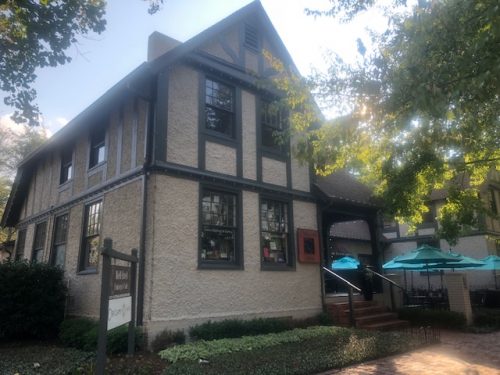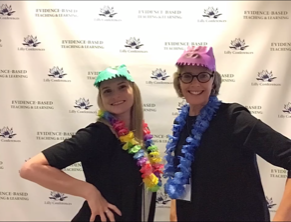This article is more than 5 years old.
Earlier this week, Joy and I rode up to Asheville, NC to attend the Lilly Conference. To be honest, there isn’t always a lot of content related to teaching credit courses at library conferences, so it was a nice change of pace to attend a conference dedicated to college and university teaching within that context.

Facilitating Meaningful Discussions
The first session I attended was a practical review of various class discussion techniques that could be used to increase discussion participation. Some I was familiar with and use regularly, like the Jigsaw Technique and the Gallery Walk. Others were new to me and would be interesting to try in the right context, including World Cafe Four Corners, and the Socratic Seminar. The one I think I would be most likely to incorporate was called “Text Tag” (sadly, there was no fancy image that I could find). But in a text tag, students annotate a reading before class with “!” if something surprised them, “?” if something confused them, and “*” if something they read re-affirmed things they already knew. Those annotations are then used a jumping off point for class discussions.
Ed-Tech Tools Round-Up
Joy and I both attended this session and it was a really great introduction to several new(ish) ed-tech tools for classroom use. We also got to practice using them, which I found really helpful. Things we tried included: Kahoot, Flipgrid, Formative, Plickers, Quizizz, and ED Puzzle.
Lots of our instruction folks have been on the Kahoot train for a while, but I had managed to stay relatively oblivious up to this point. It essentially allows you to create competitive classroom quiz games and for students to answer by using their phones. Joy made the excellent point, though, that the most common use of Kahoot relies on answering the questions as quickly as possible to earn points, which doesn’t work well for ESL learners and learners who need more time to process information. Nevertheless, there is a Team Mode, which is worth exploring.

Help One More Student Stay
One of the more interesting sessions I attended was on the Drop Rate Improvement Plan at Odessa College. Based on their research, professors can do the following four things to increase the likelihood that students stay enrolled in their class:
- Learn students’ names and about their interests
- Check-in regularly (e.g. formative assessments, e-mail announcements)
- Schedule one-on-one meetings
- Be flexible and transparent around assignments
Myths About Teaching and Learning: What’s True and What’s Not?
The final plenary session led by C. Edward Watson discussed common myths that we have about students and how they learn. All of the facts listed below are TRUE:
- The mere presence of a cell phone on a desk reduces attention span and negatively impacts academic performance
- Being distracted by a multi-tasker (sitting beside someone on their phone for example) is even MORE damaging to learning and performance
- Students tend to perform better in face-to-face classes than online classes (though of course this is contextual), largely because the online nature of the courses disadvantages students who grow up in less privileged households.


2 Comments on ‘Amanda at the Lilly Conference’
Thanks for sharing — and the true myths about teaching and learning also apply to meetings! I totally get distracted when sitting next to a multi-tasker!
Thanks for including so many little tips to takeaway – the phone one will be useful in thinking about how our student workers engage (and how we want them to engage) with their devices while they are here at work. Also love the “Text Tag” practice: seems like a really simple way to start conversation. Also reminds me of the marginalia practice used in “Harry Potter and the Sacred Text” (which I don’t recommend to non-HP readers but it showcases a lot of interesting ways to be an engaged and thoughtful reader).